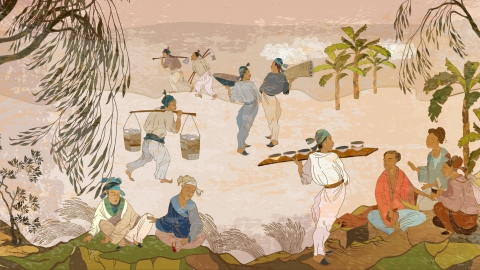MYSTERIOUS, SACRED SHANGRI-LA
The name Shangri-la became famous despite being a fictional place described in the 1933 novel “Lost Horizon” by British writer James Hilton. This imaginary place became a reality after Zhongdian County – the capital of Diqing Tibetan Autonomous Prefecture in Yunnan Province – was renamed Shangri-la in 2001, turning it into a special tourist attraction.

"Wandering" waiting for the flight to "Lost Horizon" Shangri-la.
Shangri-la is located at an altitude of 3,160 m, so the air is thinner, making visitors susceptible to altitude sickness. In return, coming to Shangri-la, visitors can experience a slow pace of life in a peaceful, quiet atmosphere that is very special because of its mysterious and sacred atmosphere.
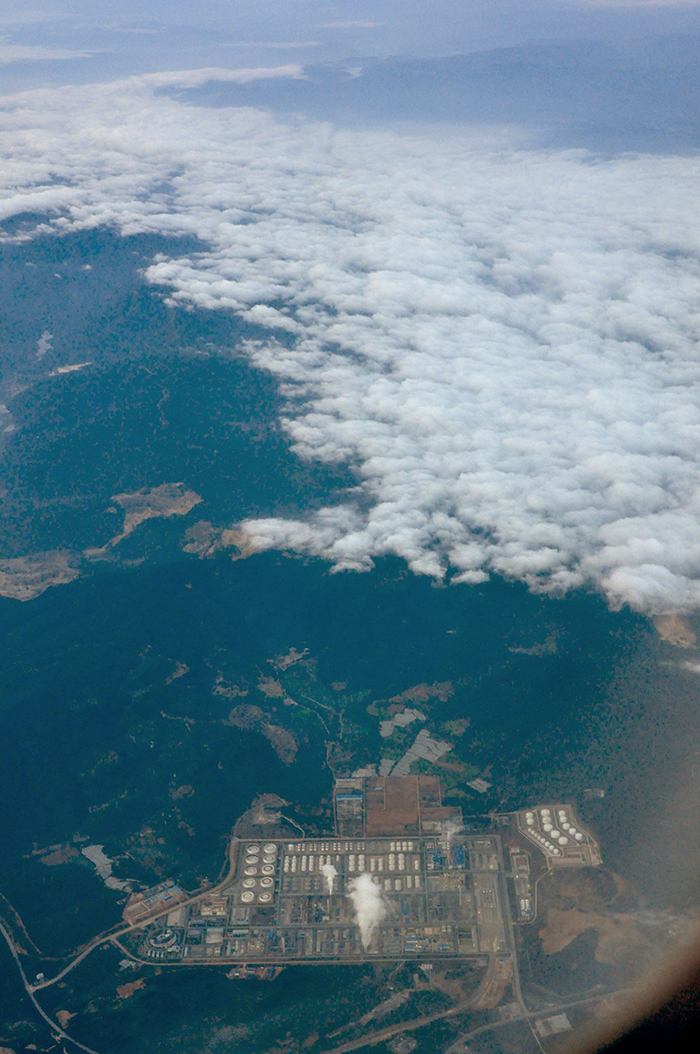
Shangri-la "floating" in the clouds appears impressively under the plane's wings.
After a night of fitful sleep waiting for the airport departure time, we were surprised when we stepped out of the Diqing airport gate at 7am and were greeted by the vast blue sky, the "golden" landscape sparkling in the dawn light in the freezing cold space with a temperature of minus 2 degrees Celsius.
We had booked a hostel right at the entrance of Dukezong Old Street because we read reviews on Trip.com that praised the owner for being “both handsome and a good cook”. Unfortunately, when we arrived, the owner was not home, and only the neighbor came to open the door to welcome the guests. Seeing that the room we had booked was spacious but too cold despite having a heater in the middle of the room, we called the owner and were immediately moved to another smaller room with a heating pad, a bathroom and a toilet with a warm heater.

Our first impression was that Shangri-la was very different even though it was also in Yunnan province. First of all, it felt closer to the sky and… knew what altitude sickness was like.
Dukezong Ancient Town, over 1,000 years old, was restored after a major fire in 2014. With the same stone-paved roads and typical ancient roofs, everything in Shangri-la is much larger and more spacious than in Lijiang. The population density is only 11 people/km2is also a big difference, making Dukezong ancient town look more gentle "mountain beauty" compared to the bustling "urban girl" Lijiang.
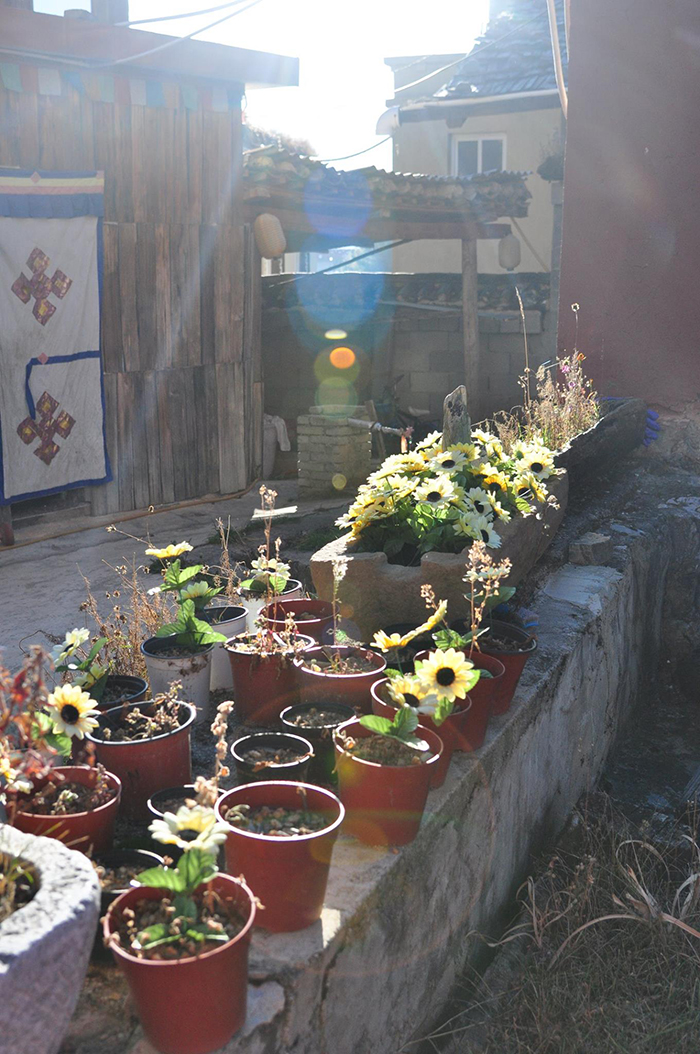
Flowers and autumn sunshine bloom right at the entrance of the hostel near Shangri-la's Dukezong old town.
After walking around Dukezong Old Street and having a delicious hot pot meal to regain our strength, we returned to the hostel to rest and let our bodies gradually adapt to the altitude. In the afternoon, the group went out to the street and took a taxi to Shongzhanlin Monastery to experience the very different feeling of watching the sunset here.
That is when we completely relax, letting our minds immerse in a virtual, sacred and mysterious space with the background of the murmuring chanting of "um ma ni bat me hong" by the Lamas (most of them tall and handsome like "soái ca").

The night is filled with sparkling lights on Dukezong ancient street in the “Lost Horizon” Shangri-la.
The way back in the typical bright sunshine of the highlands, under the clear blue sky without a cloud and the colorful flowers and trees everywhere, made us all ecstatic with the charming autumn scenery.
That evening, despite the cold, we strolled around Dukezong ancient town, climbed to the top of the hill to see the giant, brightly lit Buddhist prayer wheel, and walked around the central square to experience the slow, yet peaceful pace of life in the highlands.
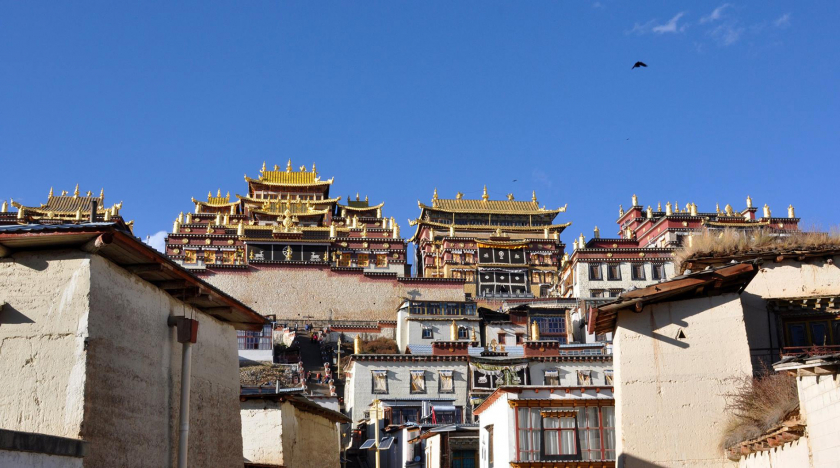
Shongzhanlin Monastery is a very special place to experience a sacred and mysterious sunset.
Feeling a little full, we bought baked potatoes and wrapped them in our jackets to keep both the potatoes and ourselves warm. We walked a short distance back to the hostel, everyone panting from the dry, cold, and dense air that is so typical of Shangri-la.
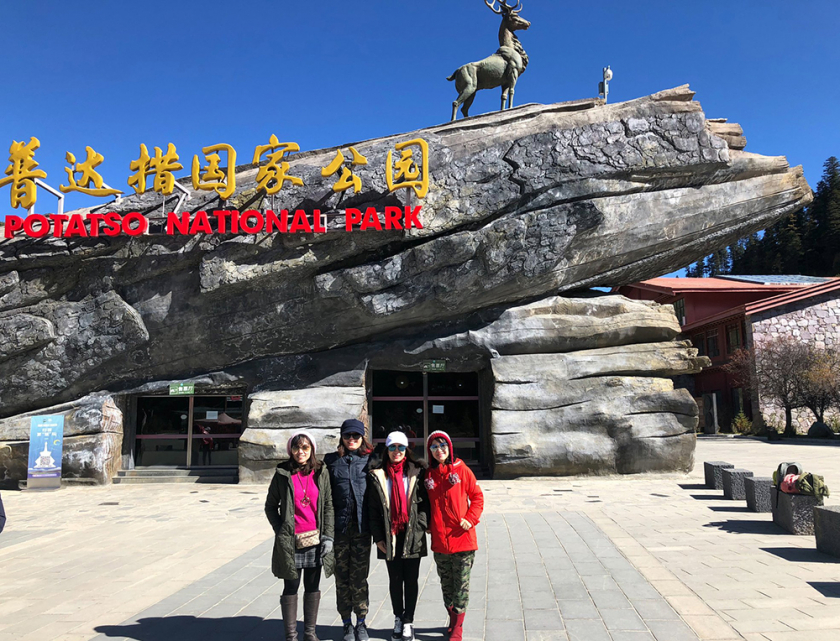
A group of Vietnamese tourists checked in at Potatso National Park, 20 km from the center of Shangri-la.
The next day we took a taxi to Potatso National Park (also called Pudacuo), which covers 1,300 km2, 20 km from the center of Shangri-la. Although we only visited one of the three tourist attractions in operation, Shudu Lake (the other two were closed), it was enough to satisfy the whole group with the autumn scenery, with the blue sky and water, the brilliant yellow of the autumn leaves, and everywhere filled with sunshine and wind...
BRIGHT LUGU IN THE "WESTERN LIANG COUNTRY"
Lugu Lake is located in the border area between Yunnan and Sichuan province. Due to its altitude of 2,685 m - the highest point in Yunnan province, Lugu Lake is known as the "Pearl of the Plateau". Formed from a geological fault, Lugu Lake possesses many diverse and unique beauties from the surrounding mountains to 5 islands, 4 peninsulas, 14 bays and 17 "beaches" "embraced" in the lake.

The impressive 9-turn corner on the way to Lugu Lake.
Another highlight is the presence of the Mosou tribe along Lugu Lake. With a current population of about 40,000 people, the Mosou are the only matriarchal tribe left in China, giving this place a famous name as in the ancient drama "The Kingdom of Western Liang".

The autumn colors along Lugu Lake are picturesque.
Before the trip, I contacted via Wechat to book a car to Lugu Lake for 450 yuan/day (about 1.6 million VND, 7-seat car). To be sure, I always asked to send a photo of the car in advance. The driver was quite young and professional, he was enthusiastic and also served as a tour guide for our group of Vietnamese tourists.

"Burnt grass" landscape along the trekking route.
The road from Lijiang to Lugu Lake is very beautiful, and when we arrived at Lugu Lake, we were even more amazed by the splendid autumn scenery with its unexpected magical changes. Ignoring the crowded stops outside, the driver took us inside to the pretty little villages, choosing beautiful and deserted spots for us to freely check-in.
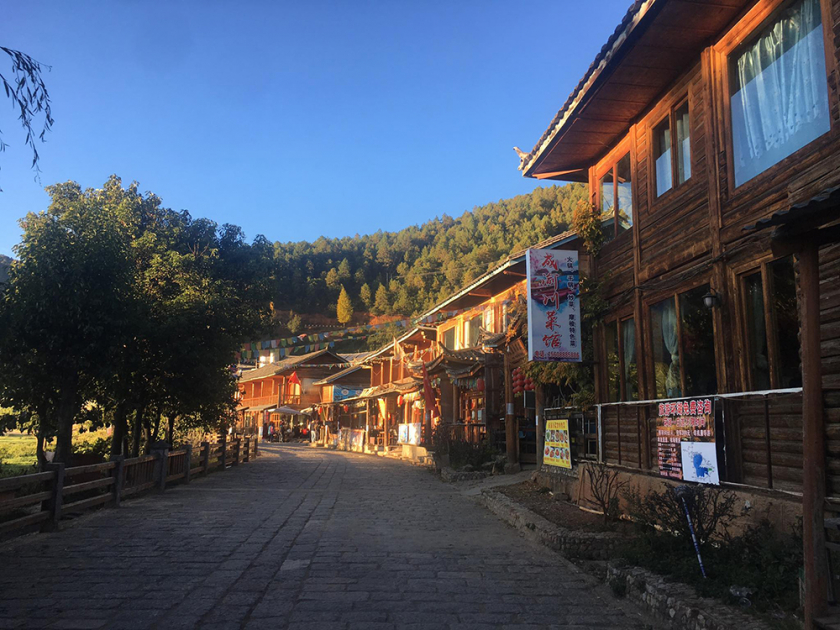
One of the pretty little villages along Lugu Lake.
Around noon we went to look at the hotel rooms, we were very satisfied because there were quite a lot and the price was cheap, only about 100 yuan/room (360,000 VND). There were many restaurants around so it was convenient for both eating and playing. In the afternoon, we went to the lake to take more photos.

The scenery around Lugu Lake is partly in Yunnan and partly in Sichuan, so it is very diverse. Each place is attractive with its own unique characteristics. It looks beautiful from any angle..
That evening we joined the flow of tourists into the village to watch the performance of the Mosou tribe. It was a bit regretful to see no handsome men or pretty women performing like in Shangri-la, but only middle-aged singers and dancers. Perhaps the young people here have gone to the city or worked far away, leaving their relatives at home to take care of all aspects of the tourist services.
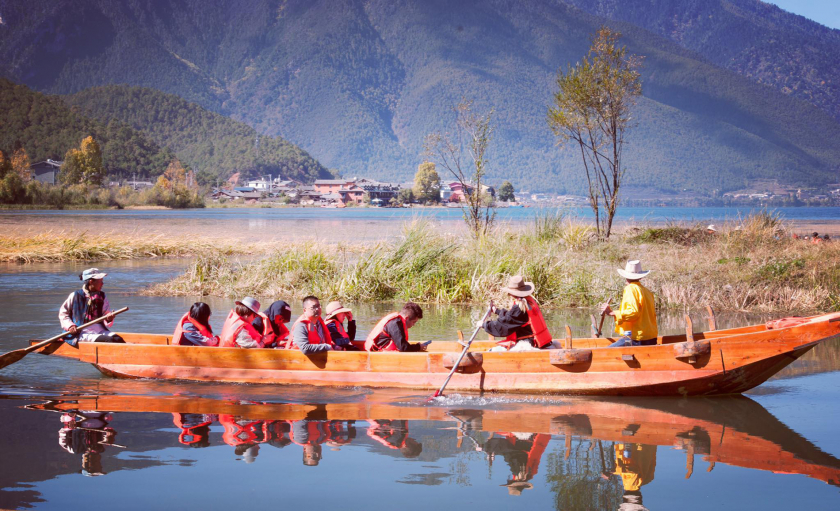
Experience a boat tour around Lugu Lake, enjoying the scenery and the fresh air.
Before leaving Lugu, we loaded our luggage onto the car and went straight to the rest of the itinerary, including: Experience a boat tour around Lugu Lake, both sightseeing and enjoying the fresh air. Lunch with Lugu Lake fish specialties was delicious and cheap. On the way back, the car stopped for tourists to get off and buy small but crispy and sweet honey apples thanks to the characteristic clear honey strips inside the apple, priced at only 7-8 yuan/kg (nearly 30,000 VND).






















